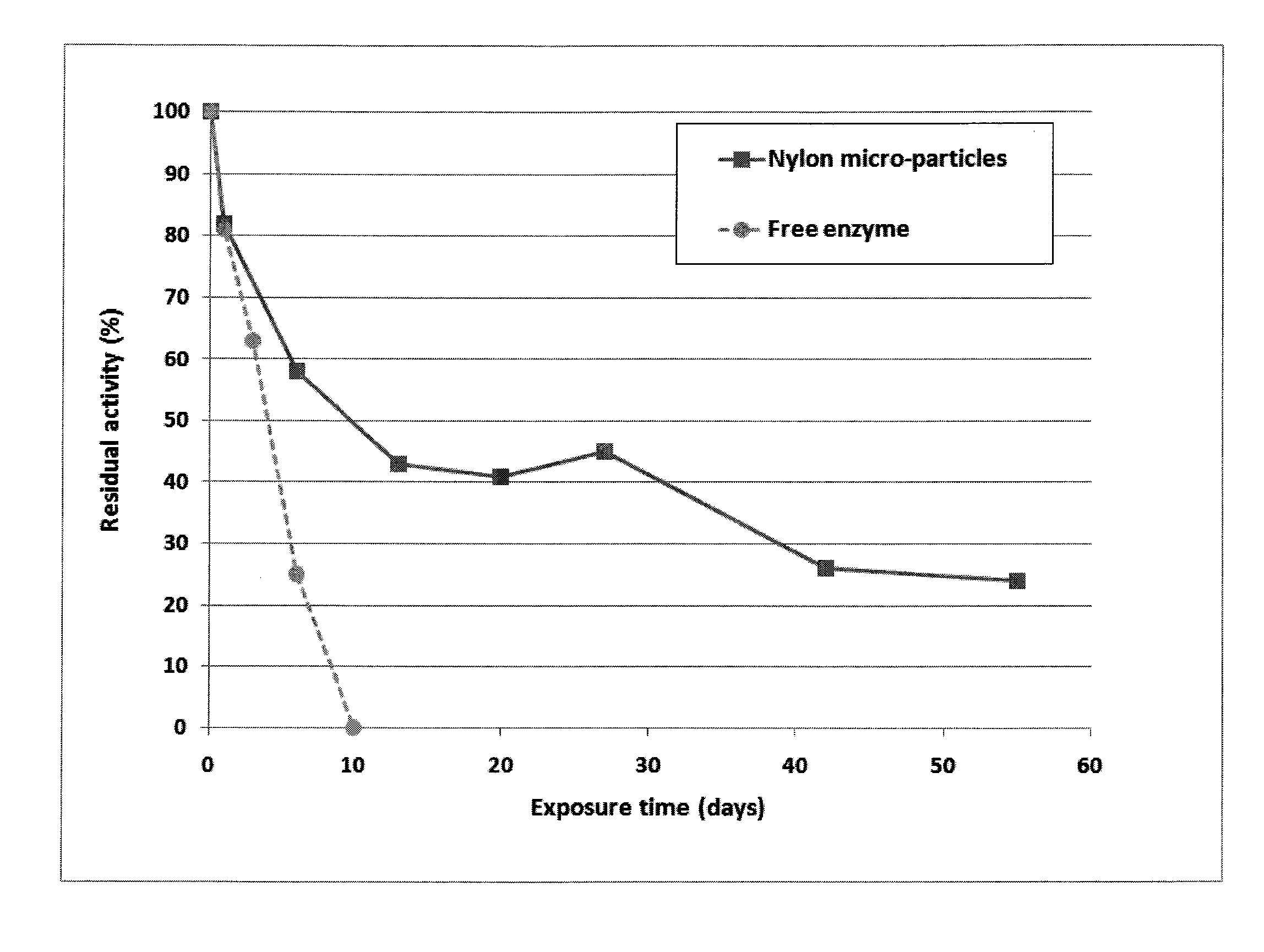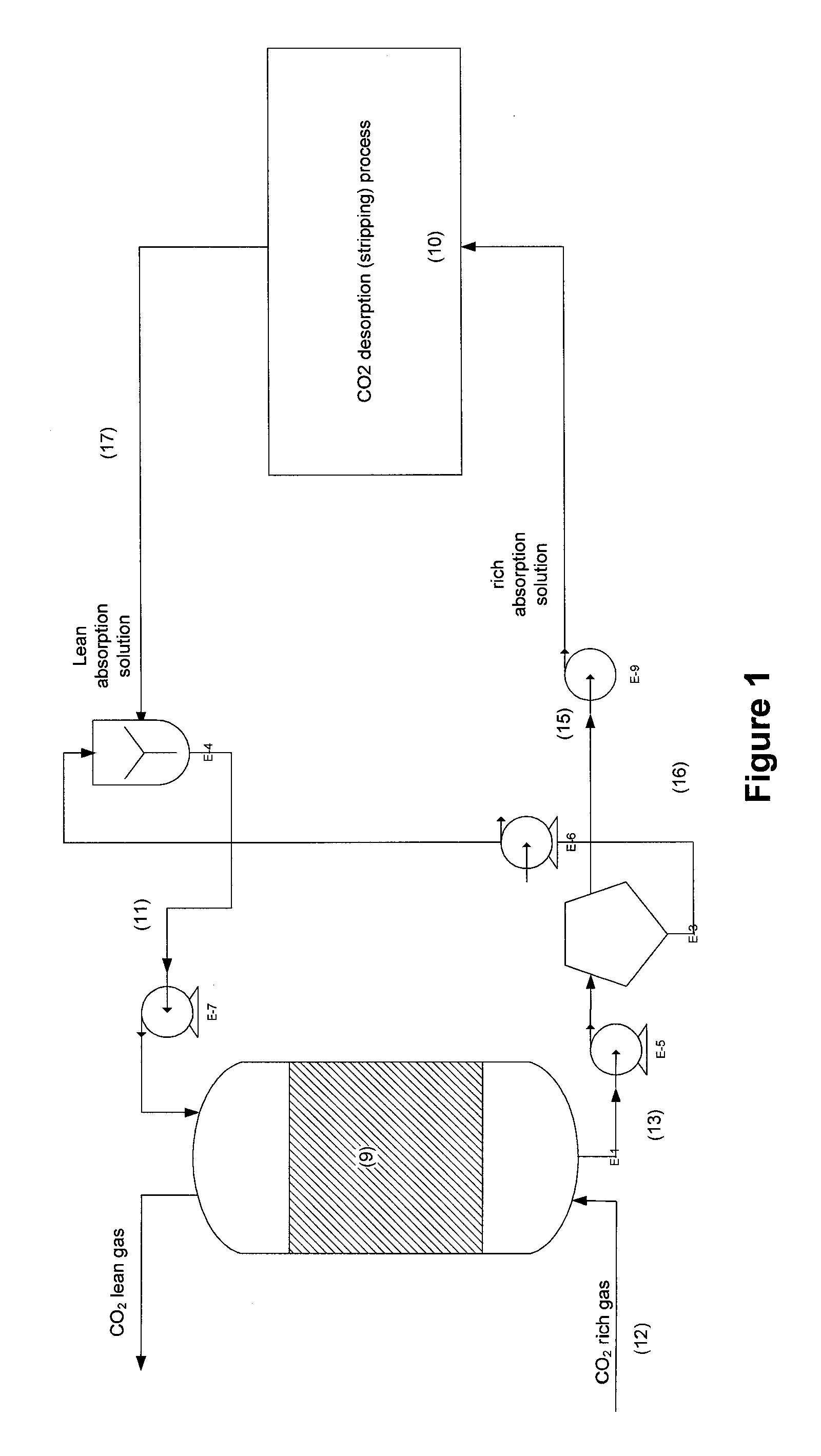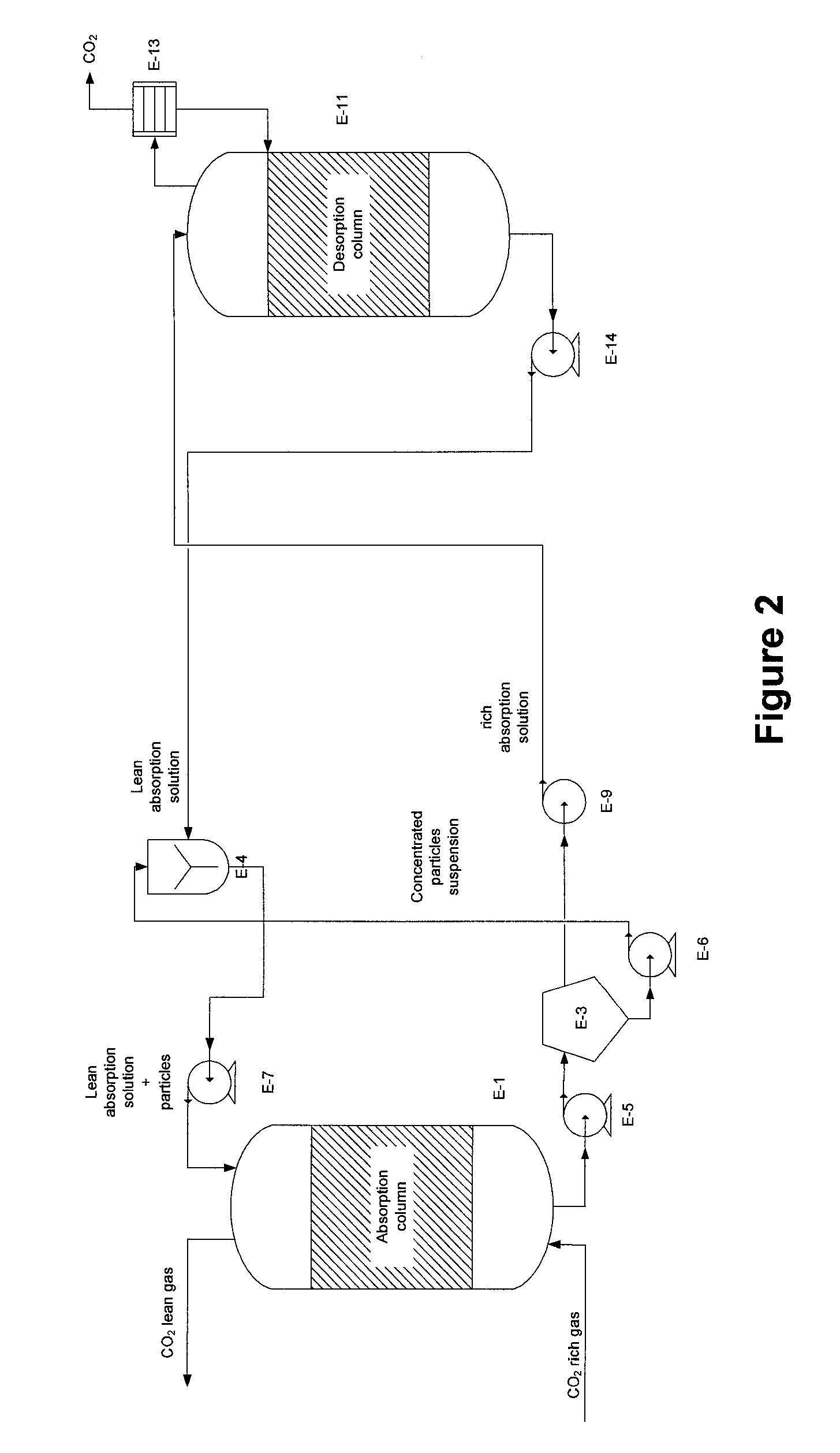Formulation and process for co2 capture using carbonates and biocatalysts
a biocatalyst and carbonate technology, applied in the field of co2 capture, can solve the problems of large cost of capture, unviability of large-scale ccs, and significant barrier to the adoption of carbon capture technology on large-scale, and achieve the effect of enhancing dissolution and transformation of co2
- Summary
- Abstract
- Description
- Claims
- Application Information
AI Technical Summary
Benefits of technology
Problems solved by technology
Method used
Image
Examples
example 1
[0073]An experiment was conducted in an absorption packed column. The absorption solution is an aqueous solution of potassium carbonate (K2CO3) 20% (w / w) (equivalent to 1.45 M). This absorption solution is contacted counter-currently with a gas phase with a CO2 concentration of 130,000 ppm. Liquid flow rate was 0.6 g / min and gas flow rate was 60 g / min corresponding to L / G of 10 (g / g). Gas and absorption solution were at room temperature. Operating pressure of the absorber was set at 1.4 psig. The column has a 7.5 cm diameter and a 50 cm height. Packing material is polymeric Raschig rings 0.25 inch. Three tests were performed: the first with no biocatalyst, the second with carbonic anhydrase biocatalyst immobilized to packing support and the third using carbonic anhydrase free in solution at a concentration of 0.5 g per liter of solution.
[0074]The results obtained showed that CO2 transfer rate or CO2 removal rate increased from 3 to 14 mmol CO2 / min with carbonic anhydrase immobilized...
example 2
[0075]An experiment was conducted in an absorption packed column. The absorption solution is an aqueous solution of sodium carbonate (Na2CO3) 0.5M. This absorption solution is contacted counter-currently with a gas phase with a CO2 concentration of 130,000 ppm. Liquid flow rate was 0.65 g / min and gas flow rate was 65 g / min corresponding to L / G of 10 (g / g). Gas and absorption solution were at room temperature. Operating pressure of the absorber was set at 1.4 psig. The column has a 7.5 cm diameter and a 50 cm height. Packing material is polymeric Raschig rings 0.25 inch. Three tests were performed: the first with no biocatalyst, the second with carbonic anhydrase immobilized to packing support and the third using carbonic anhydrase free in solution at a concentration of 0.5 g per liter of solution.
[0076]The results obtained showed that CO2 transfer rate or CO2 removal rate increased from 5 to 18 mmol CO2 / min with carbonic anhydrase immobilized onto the surface of Raschig rings. In th...
example 3
[0077]An experiment was conducted in an absorption packed column. The absorption solution is an aqueous solution of ammonium carbonate (NH4)2CO3 / (NH4)OH 8M (ammonium). This absorption solution is contacted counter-currently with a gas phase with a CO2 concentration of 130 000 ppm. Liquid flow rate was 0.25 g / min and gas flow rate was 63 g / min corresponding to L / G of 4 (g / g). Gas and absorption solution were at room temperature. Operating pressure of the absorber was set at 1.4 psig. The column has a 7.5 cm diameter and a 50 cm height. Packing material is polymeric Raschig rings 0.25 inch. Two tests were performed: the first with no biocatalyst, and the second using carbonic anhydrase immobilized to packing.
[0078]The results obtained showed that CO2 transfer rate or CO2 removal rate increased from 190 to 216 mmol CO2 / min with carbonic anhydrase immobilized onto the surface of Raschig rings. In this case, the absorption performance is increased by 14% under tested operating conditions...
PUM
| Property | Measurement | Unit |
|---|---|---|
| Temperature | aaaaa | aaaaa |
| Temperature | aaaaa | aaaaa |
| Temperature | aaaaa | aaaaa |
Abstract
Description
Claims
Application Information
 Login to View More
Login to View More - R&D
- Intellectual Property
- Life Sciences
- Materials
- Tech Scout
- Unparalleled Data Quality
- Higher Quality Content
- 60% Fewer Hallucinations
Browse by: Latest US Patents, China's latest patents, Technical Efficacy Thesaurus, Application Domain, Technology Topic, Popular Technical Reports.
© 2025 PatSnap. All rights reserved.Legal|Privacy policy|Modern Slavery Act Transparency Statement|Sitemap|About US| Contact US: help@patsnap.com



